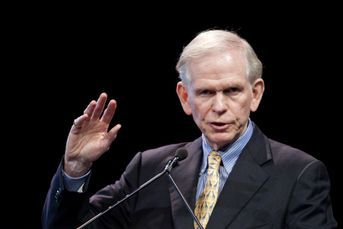Fidelity’s sector ETFs pass the $1 billion mark
The mutual fund giant pulls a Vanguard by undercutting the market with a suite of deep ETFs at the lowest cost.
Fidelity has passed the $1 billion mark in assets under management for the 10 sector ETFs it launched last October.
Assets in these exchange-traded funds have tripled from the start of 2014. Fidelity joins other fairly recent ETF entrants such as Deutsche Bank AG, Global X and Emerging Global Advisors in reaching the $1 billion milestone. But Fidelity’s inflows have been spread across all of its products rather than pouring into one or two blockbuster funds. All but one of Fidelity’s ETFs — the Fidelity MSCI Consumer Staples Index ETF (FSTA) — has more than doubled in size this year, according to data compiled by Bloomberg.
Fidelity’s offerings have a couple of investor-friendly things going for them. They’re the cheapest ETFs in each of the 10 sectors — they charge 0.12% of assets annually. That said, the hugely popular sector ETFs from State Street Corp., Vanguard Group Inc. and BlackRock Inc. all have higher trading volumes, and so slightly lower trading costs.
A deep bench of holdings is another positive for Fidelity’s ETFs. Like those of Vanguard, Fidelity’s ETFs hold stakes in many more companies than you’ll find in the average sector ETF. In the energy sector, for example, the Fidelity MSCI Energy Index ETF (FENY) holds 166 stocks; the Vanguard Energy ETF (VDE) has 164. Competing products from BlackRock and State Street hold 84 and 44 stocks, respectively. Vanguard is widely known for having “cheap and deep” ETFs, so in this regard Fidelity has pulled a Vanguard by undercutting the market with a suite of deep ETFs at the lowest cost.
Are these reasons enough for an investor using another low-cost sector ETF to switch? No. But for investors shopping for first-time sector exposure and who use the Fidelity platform, the ETFs deserve a look. They’re as good as the rest, and can be traded commission-free.
Fidelity actually has 11 ETFs — it launched the Fidelity Nasdaq Composite Tracking Stock ETF (ONEQ) in 2003. The company then sat out a lot of the growth in the industry.
(See also: Vanguard passes Fidelity to become No. 1 in 401(k) assets)
Not capitalizing on ONEQ is a major opportunity missed for Fidelity, on the scale of Xerox not seeing the value of the personal computer in the late ’70s. ONEQ has attracted just $360 million over 11 years, bringing Fidelity’s total ETF assets to $1.37 billion. That’s significant for the company but a drop in the bucket compared with big players like BlackRock, at $718 billion, State Street at $400 billion and Vanguard at $387 billion.
What’s next for Fidelity? It has registered with the Securities and Exchange Commission to launch a suite of actively managed fixed-income ETFs, including corporate and total bond offerings. So after jumping into the sandbox dominated by the big kids of equity, it will be facing Pacific Investment Management Co. on the bond side.
(Bloomberg News)
Learn more about reprints and licensing for this article.








